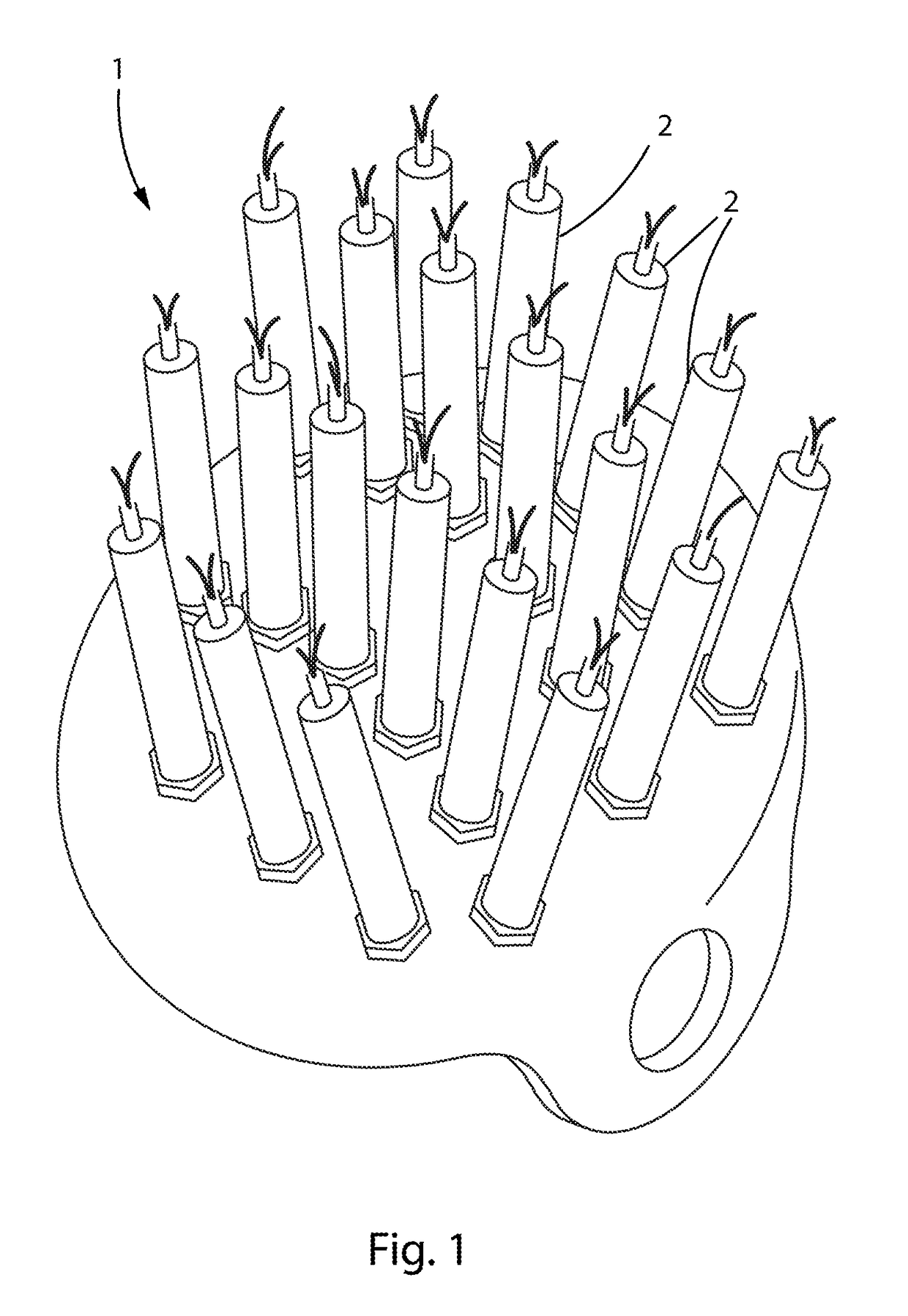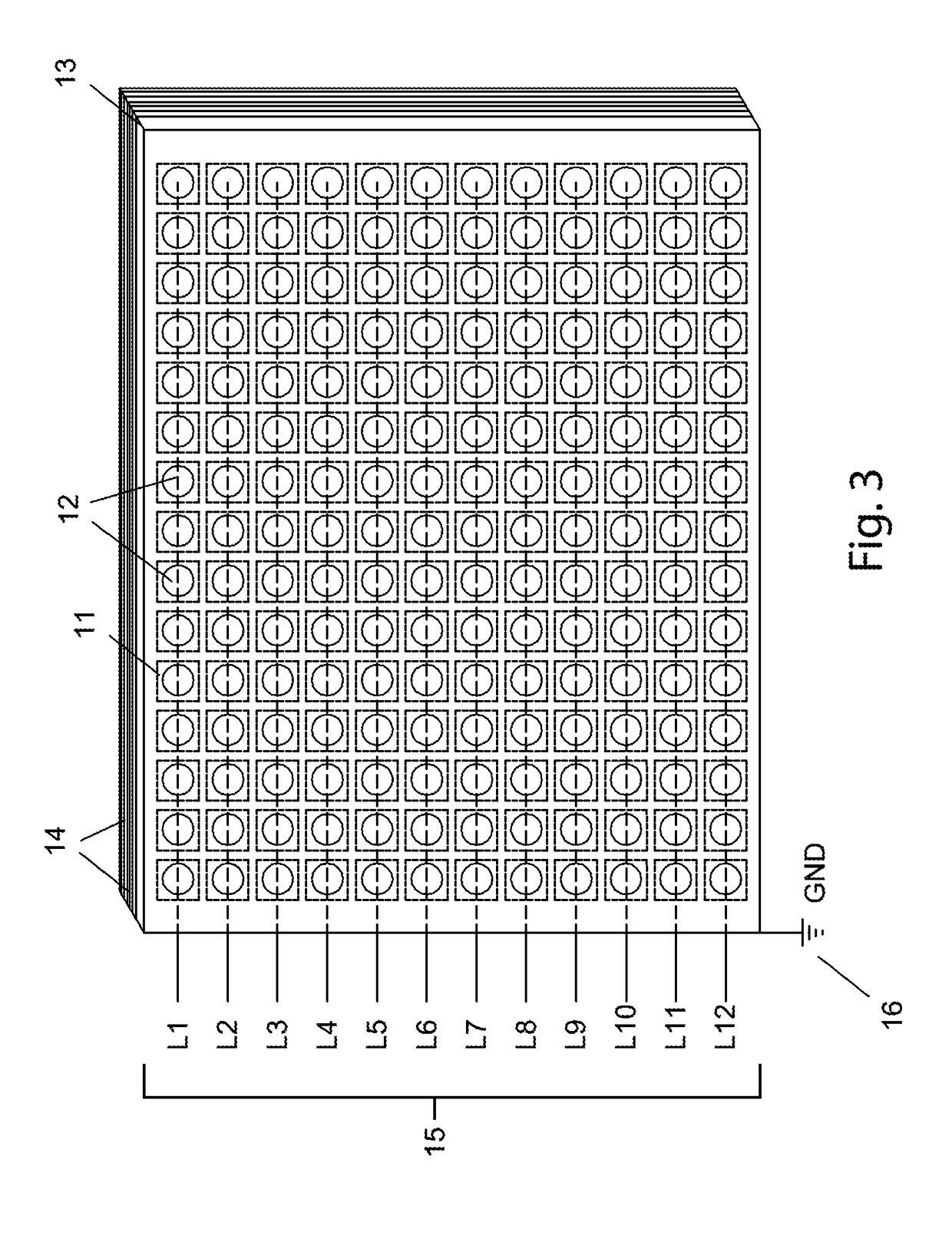Transcranial laser therapy for treatment of acute ischemic stroke
a transcranial laser and stroke technology, applied in the direction of therapy, printed circuit non-printed electric components association, lighting and heating apparatus, etc., can solve the problems of limited attractiveness and effectiveness of tlllt, labor-intensive treatment protocols, and a relatively small area of brain tissue, so as to reduce the level of brain cell necrosis, improve the effect of vascular function, and reduce the effect of vascular vascular vascular diseas
- Summary
- Abstract
- Description
- Claims
- Application Information
AI Technical Summary
Benefits of technology
Problems solved by technology
Method used
Image
Examples
Embodiment Construction
[0024]In reference to FIG. 1, the current invention comprises a head covering device 1 that greatly increases the area of a patient's cranium exposed to therapeutic TLLLT frequencies. The most therapeutic light frequencies so far identified for ischemic patients are between 730-970 nm. Current TLLLT protocols incorporate hand-held, narrow-beam conventional medical lasers pointed directly at the affected brain tissues by a technician after diagnosing the location of the ischemic event. However, because TLLLT has been shown to be safe for both healthy and ischemic tissues, irradiating more of the cortex surface area with light in this frequency range, at higher radiant intensity, and for longer periods of time, will provide greater therapeutic benefit to ischemic patients. As a practical matter, hand-held medical lasers simply cannot provide the best level of exposure time and intensity for most ischemic patients. In one embodiment of FIG. 1, a head covering device 1 is provided that ...
PUM
 Login to View More
Login to View More Abstract
Description
Claims
Application Information
 Login to View More
Login to View More - R&D
- Intellectual Property
- Life Sciences
- Materials
- Tech Scout
- Unparalleled Data Quality
- Higher Quality Content
- 60% Fewer Hallucinations
Browse by: Latest US Patents, China's latest patents, Technical Efficacy Thesaurus, Application Domain, Technology Topic, Popular Technical Reports.
© 2025 PatSnap. All rights reserved.Legal|Privacy policy|Modern Slavery Act Transparency Statement|Sitemap|About US| Contact US: help@patsnap.com



